Search
Did you mean: Iris?
Search Results
![Throne Dais of Shalmaneser III [South Face, East End]](https://www.worldhistory.org/img/c/p/360x202/10531.jpg?v=1618584310)
Image
Throne Dais of Shalmaneser III [South Face, East End]
This scene is part of a long tributary one where the Shalmaneser III (r. 858-824 BCE) receives Chaldean tribute from Musallim-Marduk, son of Ukani. On the right, a groom leads a pair of horses, unharnessed except for the halter by which...
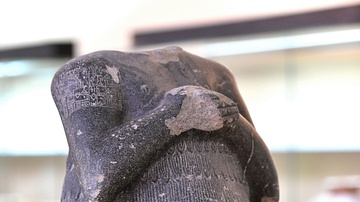
Image
Headless Statue of Entemena of Lagash
This black diorite statue depictes Entemena, a king (or ruler) of Lagash, around 2400 BCE; identified by the cuneiform inscriptions on the right shoulder and back. The king wears the typical flounced Sumerian skirt. The statue was found in...
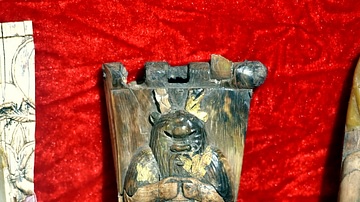
Image
Ivory Horse Frontlet from Nimrud
This ivory piece is part of the so-called "equestrian bridle-harness ornaments". It represents the lower part of a hinged frontlet, virtually complete. Most of the hinges and much of the iron pin have survived. A figure of the Egyptian...
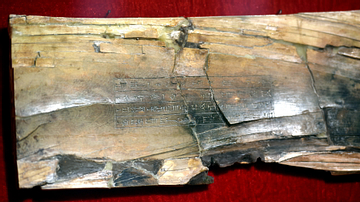
Image
Ivory Writing-Board from Nimrud
This is the outer cover of the ivory writing-boards (6 in number) incised with four lines of Assyrian cuneiform text, giving the title of the astrological script which was a compilation of omens ordered by Neo-Assyrian king Sargon II (reigned...
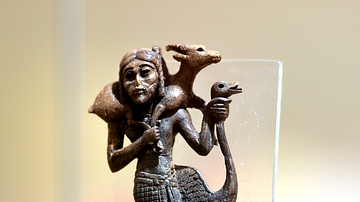
Image
Ivory Figure of Syrian Man with an Ostrich & Goat, Nimrud
This burned ivory figure, carved in the round, depicts a male figure carrying a goat on his shoulders and holding an ostrich by the neck. The depiction is very realistic; the beak of the ostrich is opened and the front wing is held upwards...
![Throne Dais of Shalmaneser III [South-West Re-entrant, S. Face]](https://www.worldhistory.org/img/c/p/360x202/10532.jpg?v=1618584310)
Image
Throne Dais of Shalmaneser III [South-West Re-entrant, S. Face]
This scene is part of a long tributary one where the Shalmaneser III (r. 858-824 BCE) receives Chaldean tribute from Musallim-Marduk, son of Ukani. On this panel, there are seven figures. The leading figure of the procession carries no...
![Throne Dais of Shalmaneser III [North Face, West End]](https://www.worldhistory.org/img/c/p/360x202/10525.jpg?v=1618801205)
Image
Throne Dais of Shalmaneser III [North Face, West End]
This scene is part of a long tributary one where Shalmaneser III (r. 858 - 824 BCE) receives tribute from Qalparunda (c. mid 9th Century BCE) of the Land of Unqi (a Luwian Syri-Hittite state, also known as Pattin). The tribute is composed...

Image
Cow & Calf Ivory Motif from Nimrud
This is one of the finest examples of the so-called "cow-and-calf" motif and is the only known to date to have been carved in the distinctive style of the "Ornate Group". On the right, a cow stands and turns her head toward her suckling calf...
![Throne Dais of Shalmaneser III [South Face, West End]](https://www.worldhistory.org/img/c/p/360x202/10529.jpg?v=1618801205)
Image
Throne Dais of Shalmaneser III [South Face, West End]
This scene is part of a long tributary one where the king receives Chaldean tribute from Musallim-Marduk, son of Ukani. Here, the Assyrian king, Shalmaneser III (r. 858 - 824 BCE), stands and his left hand rests on the tip of his bow while...
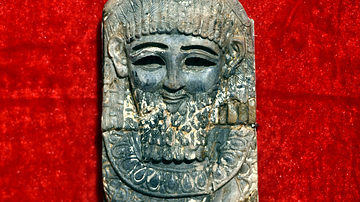
Image
Ivory Sphinx from Nimrud
This ivory plaque is virtually complete but burnt (partly black and partly grey). It depicts the bearded head and forequarters of a sphinx, advancing left with head turned outwards. This is one of the rare examples of the combination of Syrian...